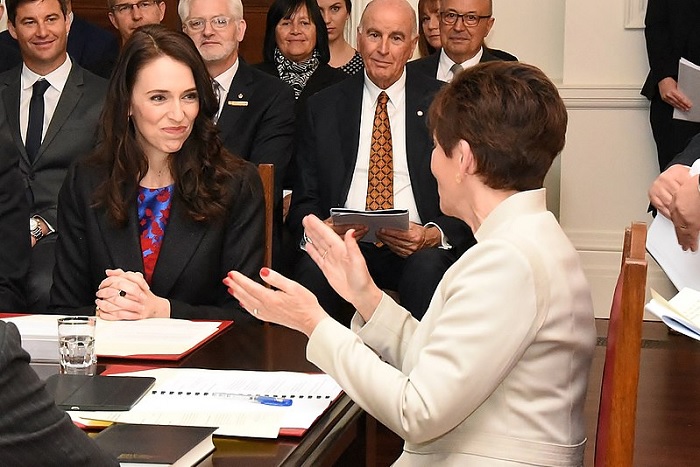world news online news
By Nick Perry
Wellington, New Zealand (AP) — New Zealand is launching a wide-ranging inquiry into whether it made the right decisions in battling COVID-19 and how it can better prepare for future pandemics. online news
Prime Minister Jacinda Ardern said Monday the coronavirus had posed the greatest threat to the nation’s health and economy since World War II. She said now was an appropriate time to examine the government’s response with the highest level of independent inquiry.
Among the questions will be whether or not New Zealand took the right approach initially by imposing strict lockdowns and border quarantine restrictions in order to try and wipe out the virus entirely.
That zero-tolerance strategy was initially hailed internationally as a success because New Zealand’s death rate remained much lower than in most other countries and people were able to continue life much as normal.
But over time, the downsides of the elimination approach came into clearer focus as the economic and social costs rose. Some citizens faced big delays returning home due to a bottleneck at border quarantine facilities.
The government eventually abandoned its elimination approach in October 2021 after new and more contagious variants proved impossible to contain and people were given the chance to get vaccinated.
China is one of the only countries that continues to pursue a zero-tolerance policy. Experts say the approach is unsustainable over the long-term and that China has no exit strategy.
New Zealand’s Royal Commission of Inquiry will be led by Tony Blakely, an Australian-based epidemiologist and professor. From early next year, it has 17 months to research and prepare an exhaustive report.
Ardern said it was critical to detail what worked in its response to help the country through future pandemics.
“We had no playbook by which to manage COVID but, as a country, we united in an extraordinary way, and we did save lives and livelihoods,” she said.

COVID-19 Response Minister Dr. Ayesha Verrall said one of the lessons was that having a prescriptive pandemic plan, like New Zealand’s influenza-based plan before COVID-19 hit, was not much use.
“I imagine the lesson has been learned that just looking at the characteristics of one bug isn’t going to cut it,” Verrall said. “You have to look much more broadly.”
The Associated Press made available through licensing by the Canadian Press. All rights are reserved.
world news online news
Notes from APS Radio News
In the US, for example, one of the countries most affected by the virus, the average mortality rate has been .07%, according to Statista.
Statista is an award-winning service that compiles and analyzes various types of data for corporations and governments.
As well, it’s been reported that for most age groups the recovery rate has been 99%.
Dr. John Ioannidis, a scientist who specializes in evidence-based medicine at Stanford University, has analyzed the mortality rates associated with the virus with respect to various age groups:
“The real-world risk of dying from COVID-19 based on published data from the Irish census bureau and the central statistics office for 2020 and 2021 is as follows: For people under 70, the death rate was 0.014%; under 50 years of age, it was 0.002%, which equates to a 1 in 50,000 risk, or about the same as dying from fire or smoke inhalation. Under 25 years of age, the mortality rate was 0.00018%, or 1 in 500,000 risk of dying from COVID-19.”
As a result of lockdowns, restrictions and mask rules, which were imposed in many countries, the number of suicides, instances of drug abuse, alcoholism, domestic abuse and mental illness increased.
Another result was that as hospitals and health facilities concentrated on the virus, many long-term illnesses like cancer and heart disease were left untreated.
Lockdowns have resulted in the closure of millions of small and medium-sized businesses.
In part, the closure of those businesses and delays at shipping ports have contributed to shortages of various goods and services.
Starting in March 2020, the US Federal Reserve embarked on a massive program of monetary expansion.
Between the early part of March 2020 to May of 2022, the Federal Reserve added over $4.5 trillion to its holdings, by purchasing each month billions of dollars’ worth of Treasury bonds and corporation bonds.
The combination of the closure of businesses and massive infusions of money has resulted in noticeably higher rates of inflation.


